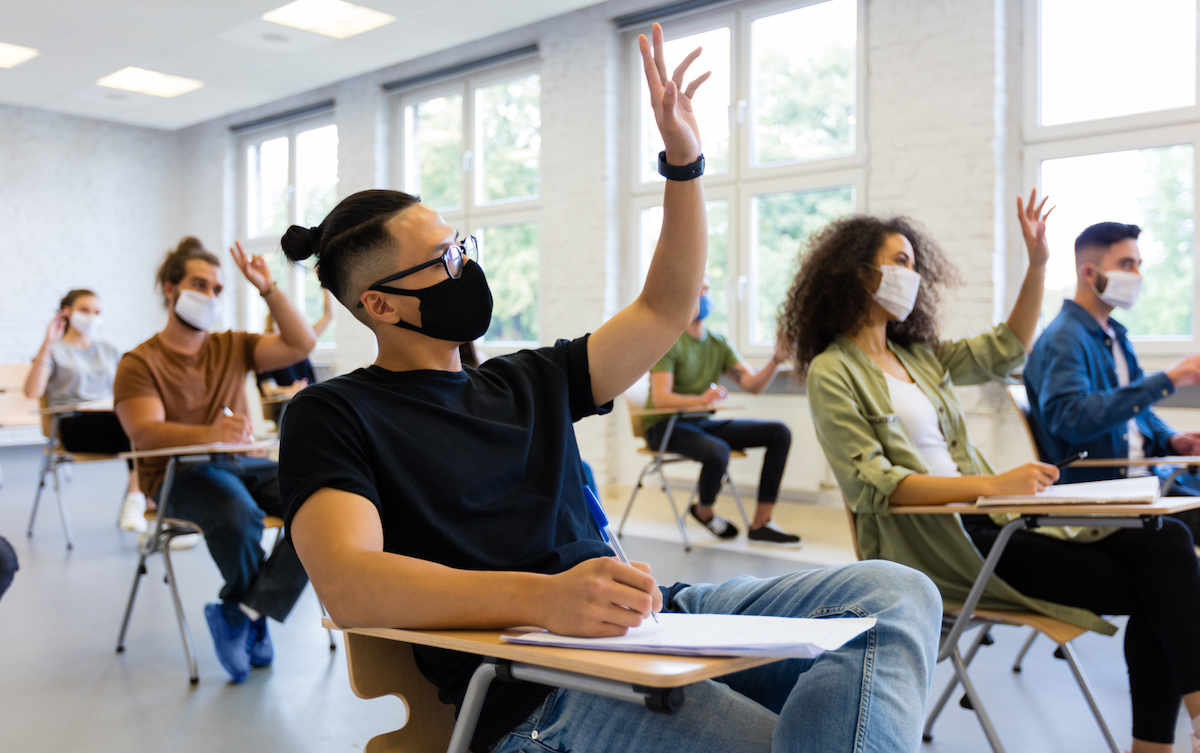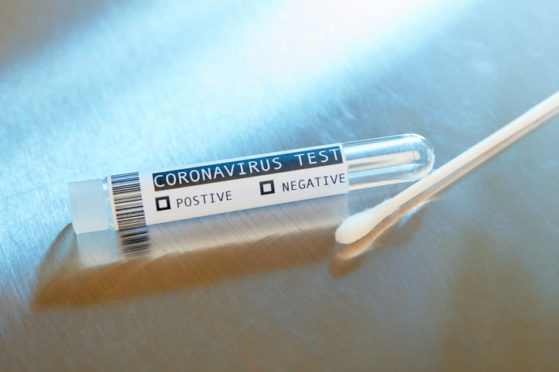A cloth face mask is no match for Omicron, the highly transmissible COVID-19 variant that spreads more quickly and efficiently than any previous strain.
Omicron, in research at Hong Kong University, multiplied 70 times faster than Delta inside respiratory tract tissue. It did not, however, infect lung tissue like Delta or the original COVID-19 strain. That might explain why Omicron is causing less severe illness but also why masking — and the type of mask — is so important in this phase of the epidemic.
“Masking is tried and true,” said Dr. Ulysses Wu, Hartford HealthCare’s System Director of Infection Disease and Chief Epidemiologist, at a Jan. 6 media briefing. “Look how much better our influenza cases were last year. We had barely any rhinovirus, influenza, human metapneumovirus, RSV (respiratory syncytial virus) — that was all nonexistent last year. We can attribute that all to masking.”
A study last fall led by researchers from Yale and Stanford universities of close to 350,000 people in rural Bangladesh found surgical masks, the familiar three-ply blue versions seen frequently in public, produced an 11 percent reduction in risk of infection and cloth masks only a 5 percent reduction when compared with villages where masks were not worn. In tests, the cloth masks filtered only about 37 percent of virus particles compared with 95 percent for the surgical masks. (For more details, click here.) That was before Omicron. Now, a surgical mask should be your baseline facial covering.
See you later, gaitor. Avoir, cloth mask. Now you need something more substantial: An N95, a KN95 or a KF94 respirator. Duke University researchers, in a study last year, found these types of masks effectively block 99 percent of respiratory droplets. Surgical masks were No. 2, a double-layered cloth mask third.
“It’s very obvious based on the data,” said Keith Grant, APRN, Hartford HealthCare’s Senior Director of Infection Prevention, “that a cloth mask vs. your N95, your KN95 or your surgical mask, the cloth mask is probably not what you want to go with against a variant that is significantly more contagious.”
The numbers associated with each high-quality masks represents the filtration efficiency. An N95 mask, for example, is rated with 95 percent filtration efficiency.
Here’s what the letters mean:
- N95: NIOSH-certified (National Institute for Occupational Safety and Health).
- KN95: Manufactured in China to Chinese standards.
- KF94: Manufactured in Korea to Korean standards.
With an N95 shortage in 2020, the Food and Drug Administration granted emergency use authorization for some KN95 masks. The federal agency has since revoked the EUA of some KN95 masks that do not meet NIOSH standards.
Users report greater comfort with the KN95s and KF94s. Yet a KN95 sold in the U.S. is more likely to be a counterfeit — the Centers for Disease Control and Prevention estimates up to 60 percent are both counterfeit and do not meet NIOSH requirements. (To find out how to spot a counterfeit, click here.)
An N95, KN95 and KF94 mask, unlike a cloth mask, uses a material with an electrostatic charge that attracts airborne particles near so you can’t inhale them. Surgical masks are also constructed with material that has an electrostatic charge, but the fit is not nearly as tight as the high-quality respirators.
The respirators, like surgical masks, were designed for a single use. But the CDC, early in the pandemic, approved of limited N95 reuse. For the consumer, consider alternating between several masks, storing the unused masks in a breathable paper bag.
If you still don’t want to give up your fashion-statement cloth mask, use it as a protective outer layer over a surgical mask.




